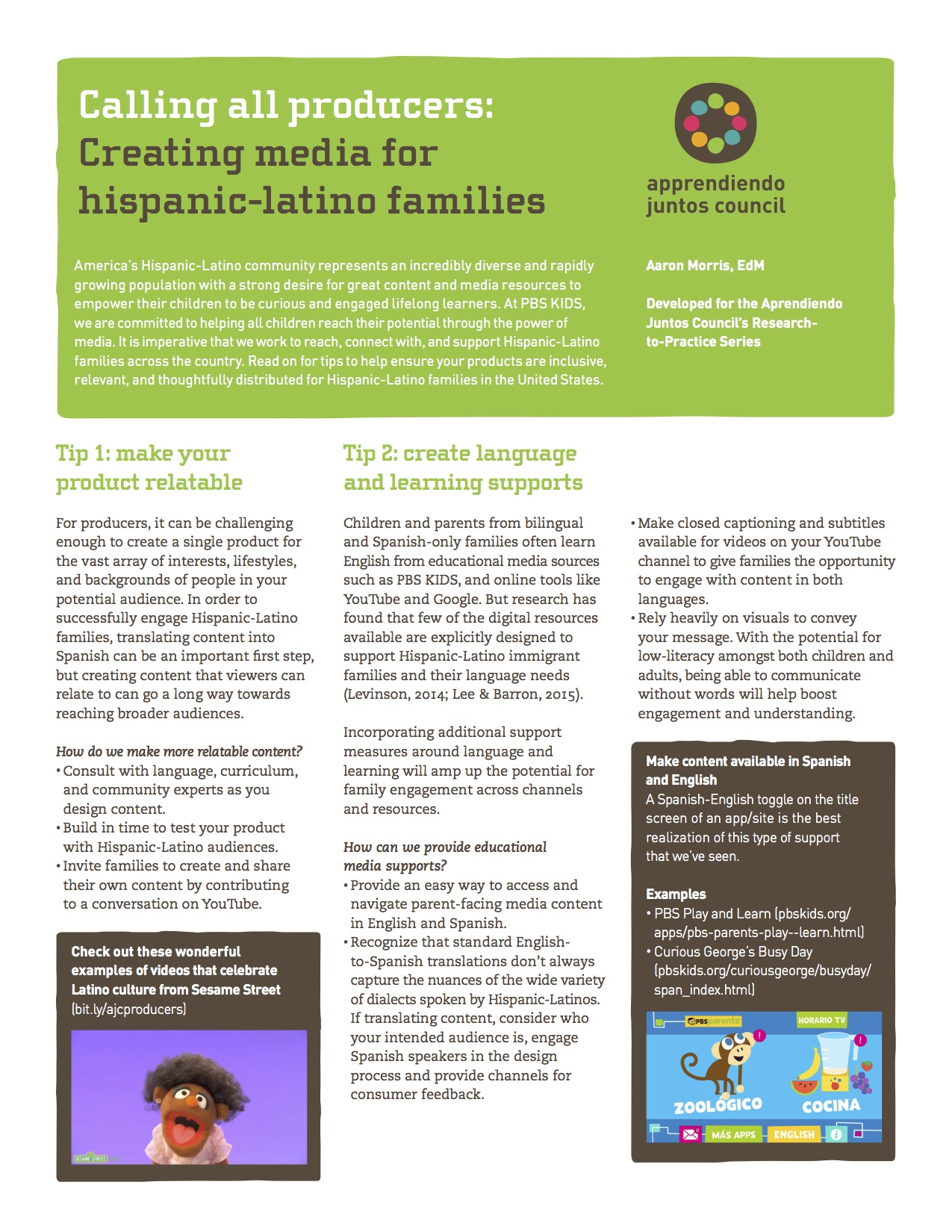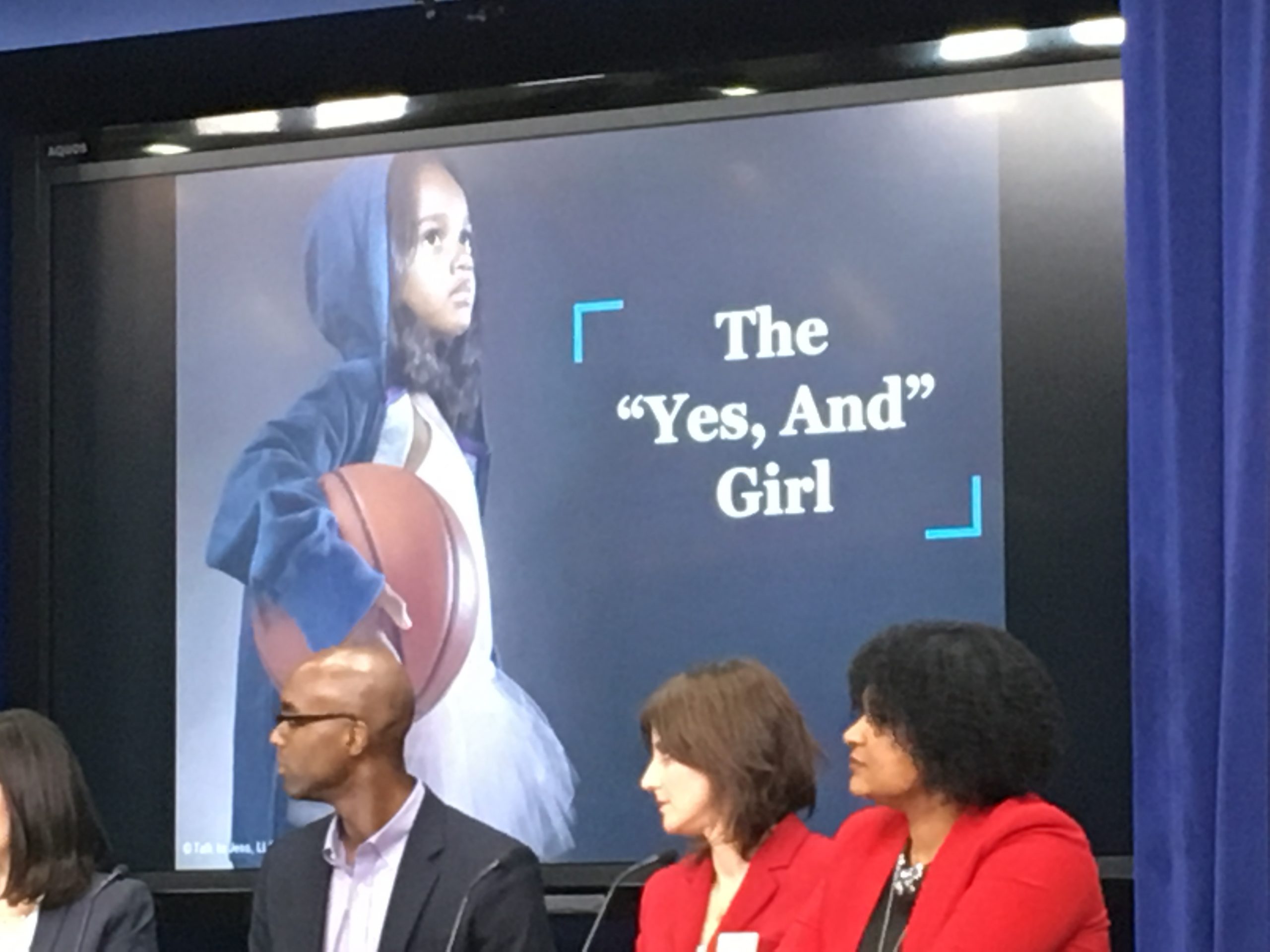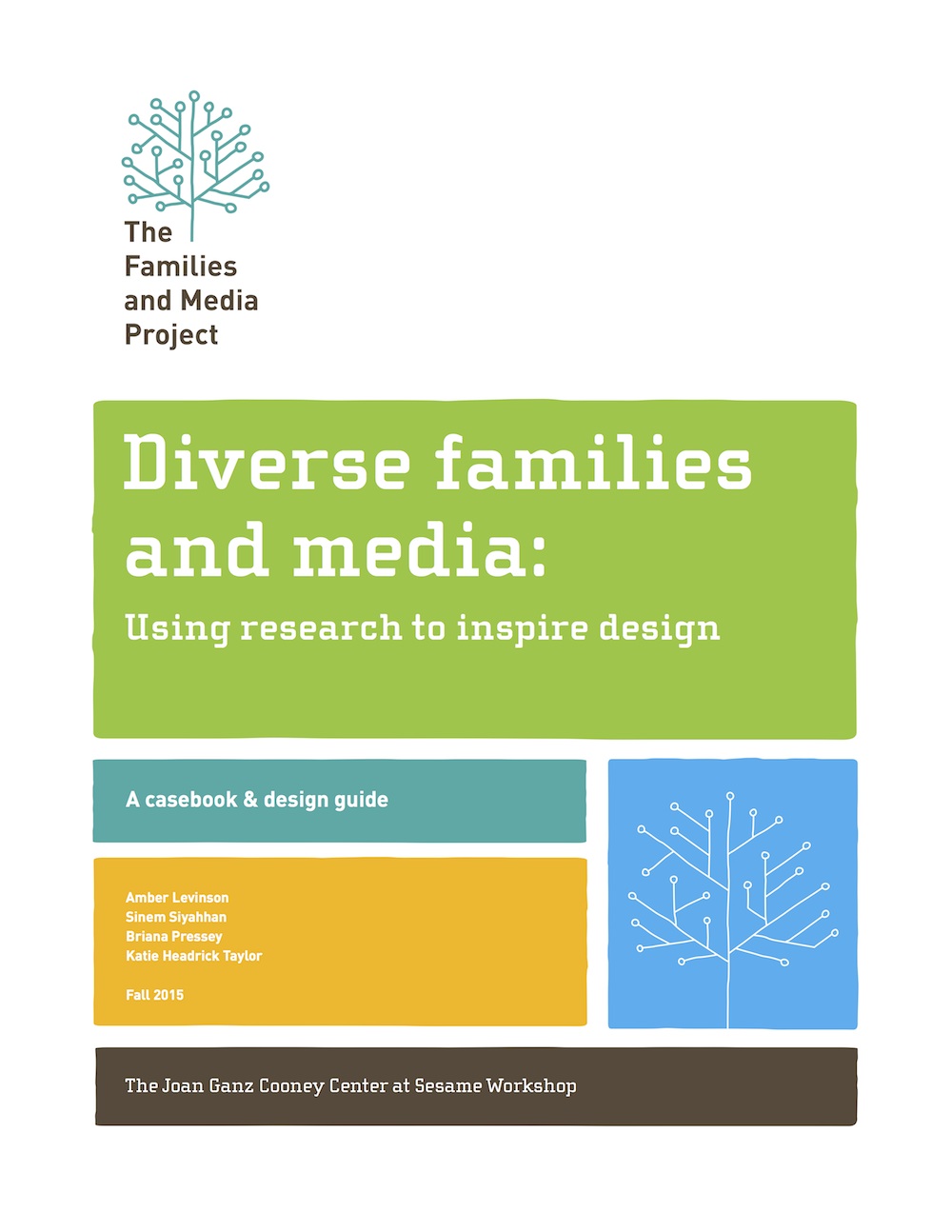“So, can you tell me what some of your favorite shows are?”
As a researcher on the Families and Media Project, I had the opportunity to talk to several children about their media use. I sat in 8-year-old Lina’s kitchen as she tried to answer my questions, though it was clear she would rather enjoy her plate of macaroni and cheese in peace.
She told me that because her family did not currently have cable, she spent most of her time watching Curious George and Ninja Turtles DVDs. However, when she visits friends and cousins, she is able to watch popular shows on Nickelodeon and the Disney Channel.
Out of my own curiosity, I asked her who some of her favorite characters were, and if she had any favorite characters who looked like her. “Who look like me?” She turned her eyes up to the ceiling, thinking long and hard about a character who might have her long brown ponytail, tanned skin, and dark eyes. After pondering for a while, she shrugged, a bit disappointed, and said, “I don’t know. I can’t really think of one.
While this may not seem like a huge deal, especially since Lina does admire other characters who do not necessarily look like her, having a diverse range of characters in the media that children interact with is extremely important. It’s not just about “doing the right thing” or creating products that actually reflect the U.S. population (in which Hispanics are estimated to make up 30% of the population by 2050). Research has shown that media play an important role in shaping self-concept and identity (Ward, 2004) and that there is great potential for children to learn from characters whom they perceive are like them (Fisch & Truglio, 2000).
For these reasons, I was very excited to help write the Cooney Center report, Diverse Families and Media: Using Research to Inspire Design. The report, meant to inspire producers, designers, and educators to create thoughtful and inclusive products and programs for children and their families, features ethnographic case-based design challenges drawn from the research done by Families and Media Project members.
The report ultimately led me to an extremely passionate group called Diversity in Apps, a multi-sector group of app designers, media producers, researchers, and educators who care deeply about making the children’s digital media space one in which children of all backgrounds can see themselves reflected in the activities that they interact with daily. I met the group at their kickoff event which they hosted along with the Children’s Media Association. The event featured a panel of experts on the subject of diversity in media, including Liza Conrad (Hopscotch), David Grandison Jr. (Startup Entrepreneur), Darrell Robertson (Carroll County Public Library), Kika Gilbert (Tiny Bop), Kevin Clark (George Mason), and Amy Kraft (Monkey Bar Collective).
In 2010, Sesame Workshop’s “I Love My Hair” became a viral sensation among because of its positive message.
At the event, I was struck by the enthusiasm of the Diversity in Apps co-founders, Kabir Seth (Storied Myth) and Sandhya Nankani (Literary Safari). In addition, the knowledge of the panel and the takeaways from the discussion were highly valuable. For example, panelists suggested thinking about issues of diversity early on in the process—even as early as hiring decisions—as well as making sure that production and design teams deeply engage with the communities they are designing for in the spirit of “Don’t make it about us without us.” I knew immediately that I wanted to be a part of this community, and help to contribute to a more diverse digital space for children.
After collaborating with the group for a few months, I can say that this consortium is one that truly “walks the diversity talk,” putting their knowledge and experience to action. Diversity in Apps is currently thinking about an overall strategy for tackling gaps in inclusion not only in apps, but across all children’s digital content. In addition, they are taking the idea of the Diverse Families and Media guide a step further by creating a detailed framework for children’s media producers that will include tips for creating a more diverse media environment. This framework will take the somewhat elusive, broad idea of diversity and turn it into action items for producers through checklists, timelines, and infographics for leaders to share with their creative teams. Once this framework is released, children’s media creators will have step-by-step guidelines from the beginning to the end of their production processes, and children like Lina will be able to list not just one, but many characters who look like them and whom they admire.
A Call to Action
If you are someone who cares deeply about providing children with ample opportunities to engage with media that not only teaches them, but accurately and bountifully represents them, there are ways for you to get involved as well!
- Go to www.diversityinapps.com to learn more about the team, download presentations, and listen to the podcast.
- Click the “Join Us” tab to subscribe to the newsletter, and to inform the team whether you’d like to get involved via leadership or volunteer positions. You can also sign up for the newsletter here.
- Follow Diversity in Apps on Twitter, Facebook, and Soundcloud
- Subscribe to the podcast on iTunes




